The Corsair Carbide 600Q Case Review: Upside Down But Right On
by E. Fylladitakis on September 12, 2016 8:30 AM EST- Posted in
- Cases/Cooling/PSUs
- Corsair
- ATX
- E-ATX
The Interior of the Corsair Carbide 600Q
The removal of the case’s panels reveals a simple but very interesting interior, with an inversed motherboard tray, meaning that the motherboard is literally upside down. Corsair based this design on the simple concept that the cool air sinks towards the bottom of the case, making the front and bottom fans more effective as intakes and the rear fan more effective as an exhaust. Furthermore, it allowed the designer to seal the top of the case, significantly improving its acoustics performance.
Cleverly, the designer moved the PSU compartment to the top of the case, putting it at the same height as the 5.25" drive bays. As the PSU is much shorter than other system components, such as the motherboard and long GPU cards, moving the PSU and drive bays above the motherboard allowed the designer to greatly shorten the case without having to worry about hardware compatibility problems.
With the exception of the cooling fan blades, everything inside the Carbide 600Q is black. The metallic parts are sprayed with the same satin black paint as with the exterior of the case, as are most of the plastic parts as well. The only exception is the cover of the PSU compartment, which has been treated with a matte varnish finish. One 140 mm intake and one 140 mm exhaust fan are pre-installed inside the Carbide 600Q, with one more 140 mm fan supplied as an extra.
There is a very large opening on the motherboard tray for the installation of aftermarket CPU coolers, so large that it will extend beyond the boundaries of a Flex-ATX or smaller motherboard. Only a full ATX or Extended ATX motherboard will fully cover the opening. Large openings with rubber grommet coverings for the routing of cables can be seen to the left and above the motherboard area. Two narrow but long openings can be seen below the motherboard, without any grommets installed.
Corsair moved all of the drives to the left side of the case, behind the motherboard tray. Two 3.5” drives can be installed in the slots found beneath the PSU compartment, on plastic trays. These plastic trays can also accommodate 2.5” drives, if required. Three plastic 2.5” drive cages can be seen directly behind the motherboard, allowing the quick and tool-less installation of devices.
To take a look at the case with a finished build inside it, we installed a Corsair AX760i with the red cable set, for strong visual contrast. The AX760i easily fits inside the PSU compartment of the Carbide 600Q, with plenty of room for managing the cables. There is also a massive 28 mm clearance behind the motherboard tray, allowing for the easy routing of cables. The distance between the PSU and the motherboard’s CPU power header is long though, and the EPS power cable could only reach our system’s connector via a straight line, going right above the installed 2.5” drive. Extenders will definitely be necessary for PSUs with shorter cables.
The system area of the Carbide 600Q is very spacious considering the volume of the case. There is a significant clearance between the motherboard and the bottom of the case, allowing for the installation of liquid cooling radiators. We would recommend not installing radiators wider than 30 mm, as they could interfere with the motherboard’s components. The space in front of the motherboard allows for cards up to 370 mm long to the installed, but this distance will be shortened if there is a liquid cooling radiator installed at the front of the case. Users who prefer air coolers should not have to worry, as the case is very wide and there is a significant clearance between the CPU area and the bottom of the case, allowing compatibility with nearly all of the air coolers currently available.
One minor problem about the Carbide 600Q, but one that users checking the windowed 600C version should definitely consider, is that nearly all of the modern hardware has been aesthetically designed with normal orientation in mind. The inverse design will cause designs, logos, and labels to be upside down, much like it does for the chipset heatsink and the GPU cooler labels of our showcase system. This is of no real consequence inside the opaque 600Q, but it will be a serious aesthetics issue for modders trying to build a visually pleasing system inside the windowed 600C.


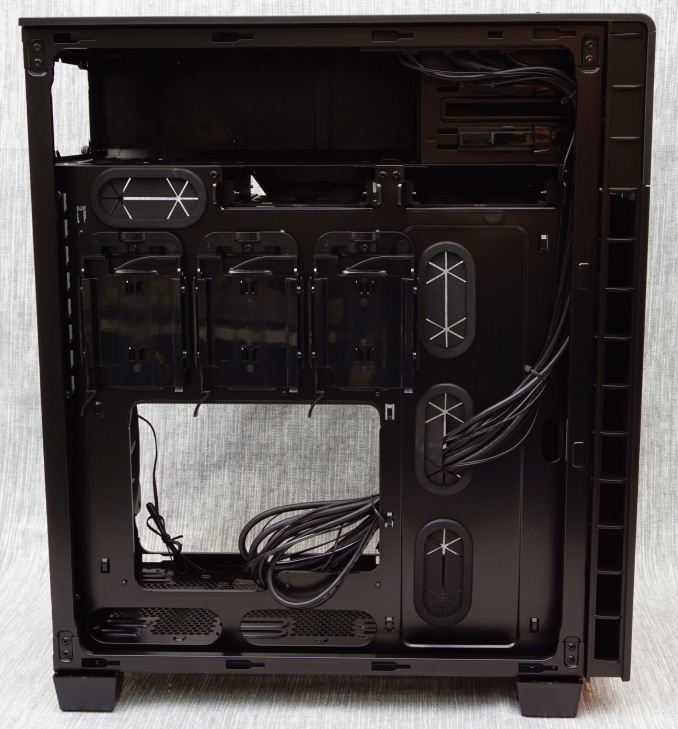

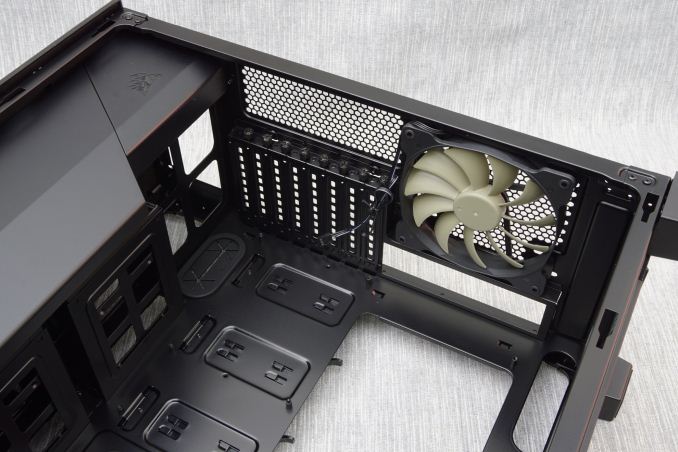
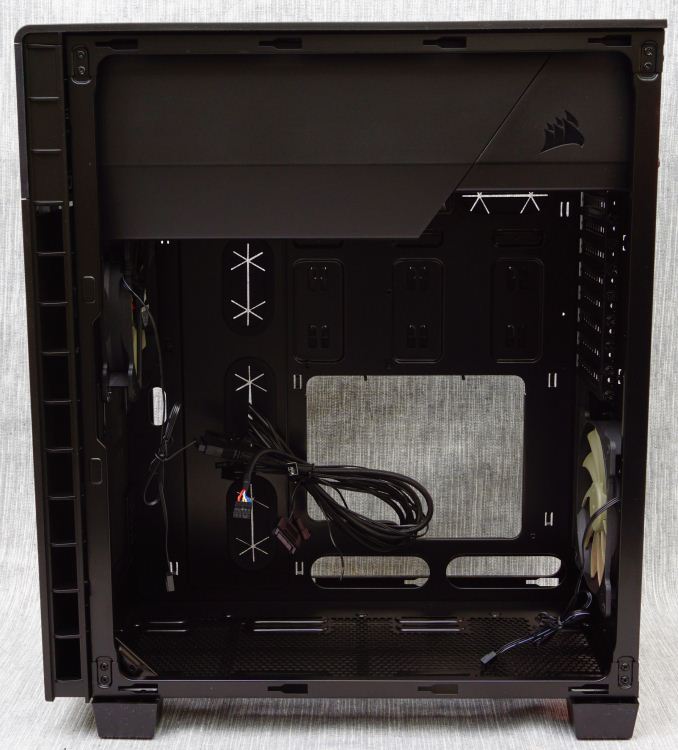
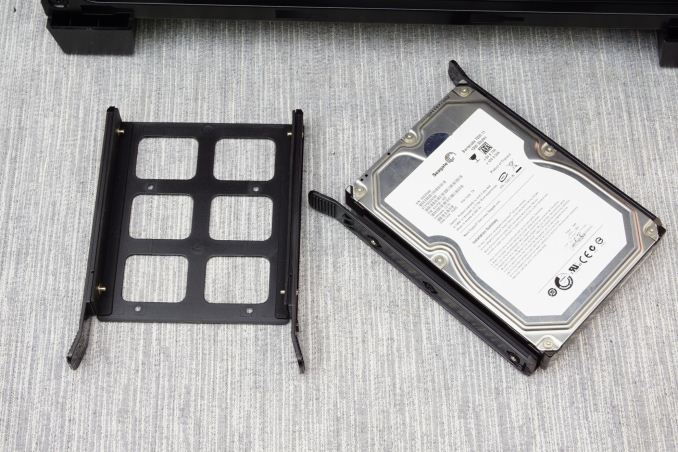
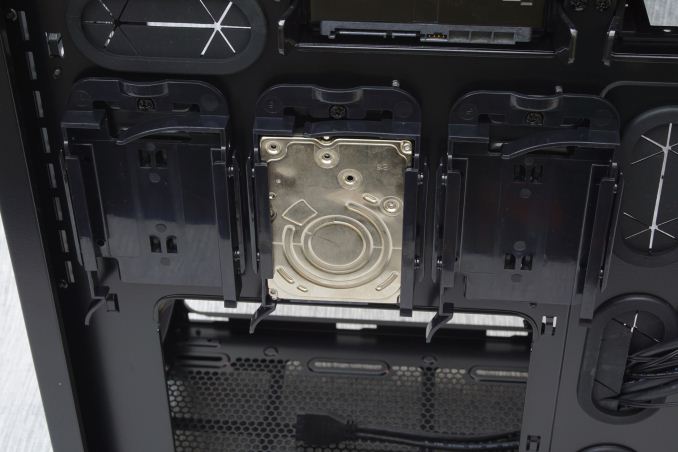

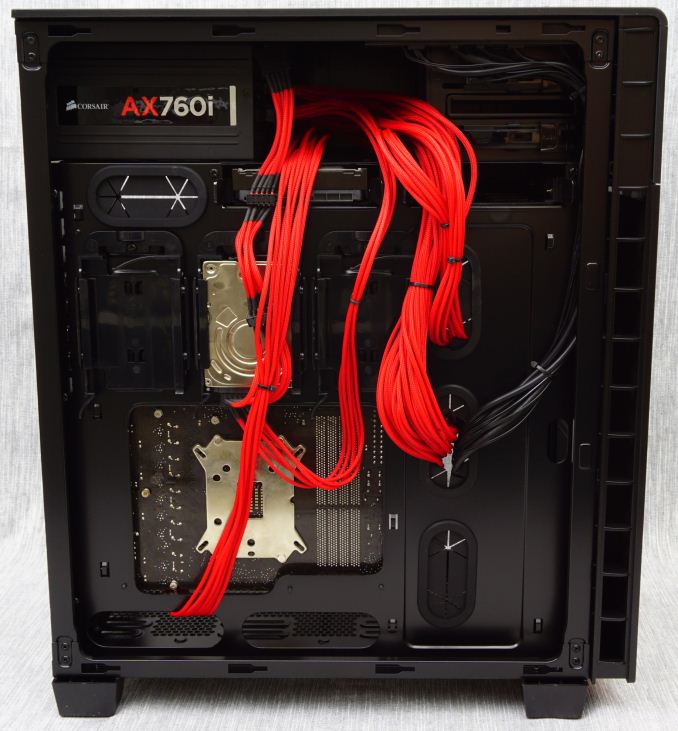








46 Comments
View All Comments
Ej24 - Monday, September 12, 2016 - link
Holy crap, I nearly forgot my first computer, an eMachines 633ids. Thank you for this nostalgic moment.justaviking - Monday, September 12, 2016 - link
Where is the panoramic window?In the table on page 1, the second Prominent Feature is "Full side panel window: A gorgeous, panoramic full side panel window shows off your components..."
I kept looking for a picture of that great feature.
Ryan Smith - Monday, September 12, 2016 - link
There are two versions of the case, an opaque version and a windowed version. We have the opaque version. The feature list comes from Corsair, so I've tweaked it just a bit to make it clear that there are multiple versions.Houdani - Monday, September 12, 2016 - link
Three cheers for the non-window version. Case Makers: More please.fmyhr - Monday, September 12, 2016 - link
Exposed top-panel ports: recipe for poor connections due to dust collection. I suppose some electrical tape over unused ports would fit right in with the "carbide" look. ;-)madwolfa - Monday, September 12, 2016 - link
Looks like a larger version of SilverStone TJ08-E, which is probably a good thing. And yeah, the interior design (PSU orientation, etc) is nothing new.DanNeely - Monday, September 12, 2016 - link
Are the thermal tests actually passive as captioned in the graphs, or are they with the case fans running as implied by the text? If the former, where are the actively cooled thermal graphs.Ryan Smith - Monday, September 12, 2016 - link
The case fans are running. It's the heat load itself that's passive.DanNeely - Monday, September 12, 2016 - link
Is that the same setup used for the Graphite 760 and Deep Silence 6 tests that this case is compared to; which don't have the word passive on their graphs.The lack of fans on E.Fyll's test heaters is a separate issue. It doesn't matter much with large enthusiast cases with several pre-installed fans. The problem is the other end of the market where his test methodology makes cases designed around smaller quieter setups whose lack of pre-installed fans indicates they were either designed to use the fans on the PSU, CPU heatsink, and optionally a blower style GPU cooler to dissipate heat look much worse than they would in a more realistic setup.
E.Fyll - Wednesday, September 14, 2016 - link
It is the same setup. We just improved the graphs to provide more information and be aesthetically appealing.We are intentionally using a passive thermal load. This is not an issue at all; on the contrary, any form of active cooling would affect the results dissimilarly for each given design. With a fully passive load, we determine how the case performs unaffected by external parameters (as far as that is possible, of course). If we were using active cooling that would induce airflow to "assist" a case that cannot provide sufficient airflow over a certain area, we would be essentially fabricating the results. We are testing the case itself, not a predetermined system as a whole.
The cases that you mention do not "look" much worse than they would in a more realistic setup. They are much worse. In the scenarios that you describe, thermal energy will not disappear, it will move through the components that they have been designed to be cooling only themselves. When a case has been designed with its cooling depending on parts that are not supposed to be "assisting the case", the thermal performance of that specific part dives. For example, if a case has been designed so as to "depend on the PSU's fan", the PSU will have to extract the extra thermal energy that the case cannot. It will get hotter, louder and the thermal performance of the whole area will depend on the specific cooling capabilities of the PSU, just because the case cannot extract the heat by itself. Will it work? Yes (well, probably). Does it perform just as well as a case that can extract the thermal energy all by itself? Absolutely not.